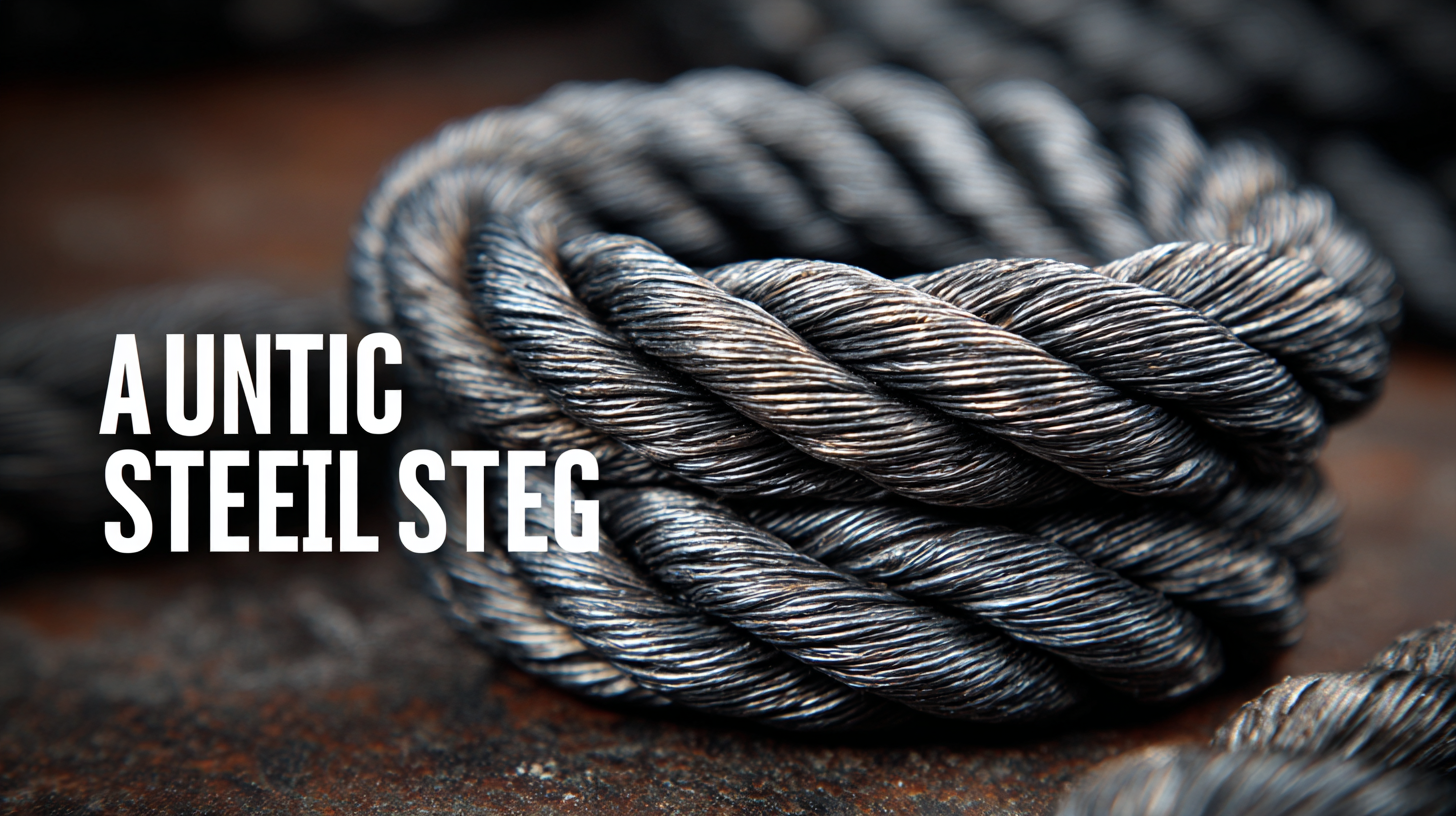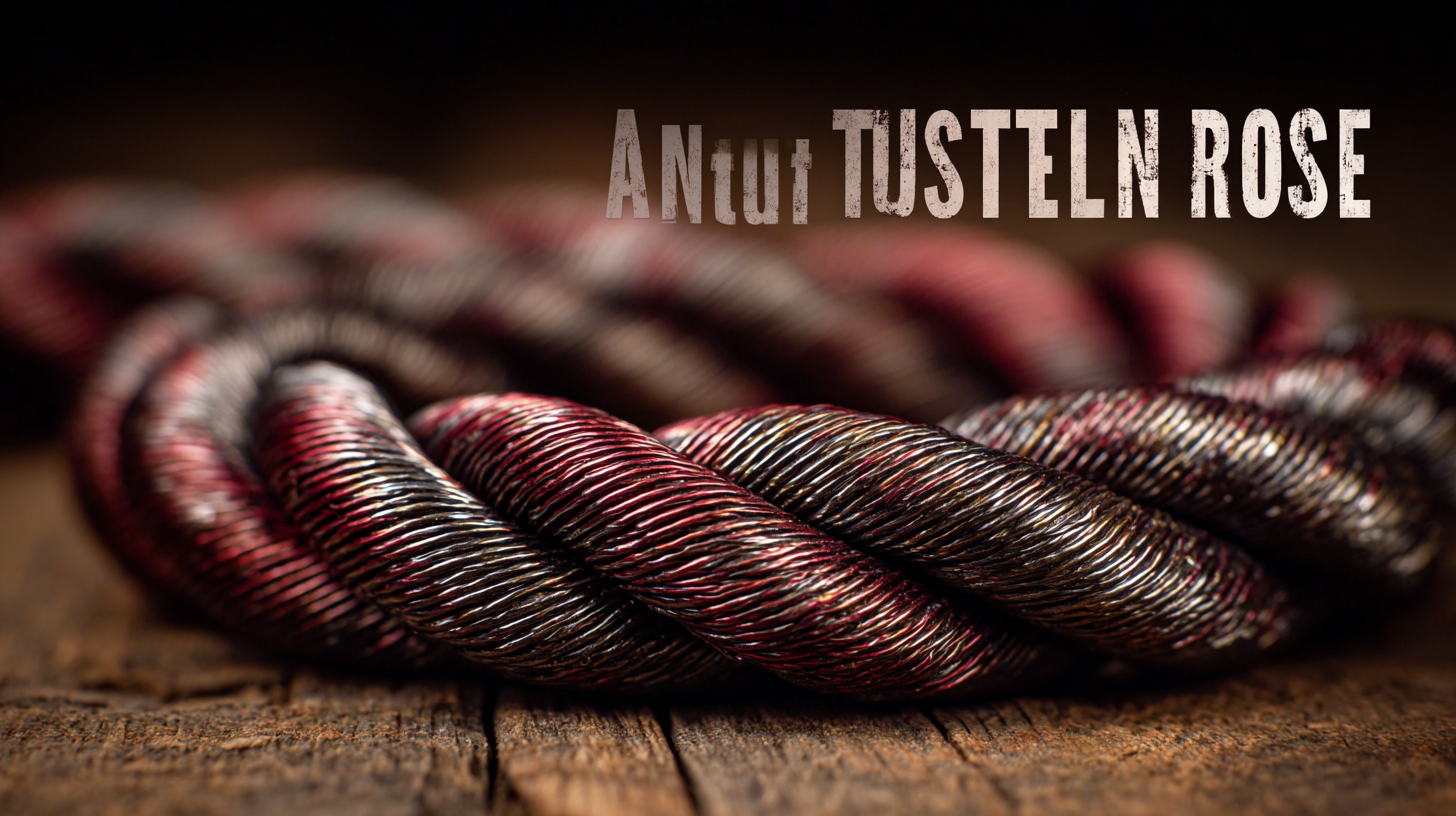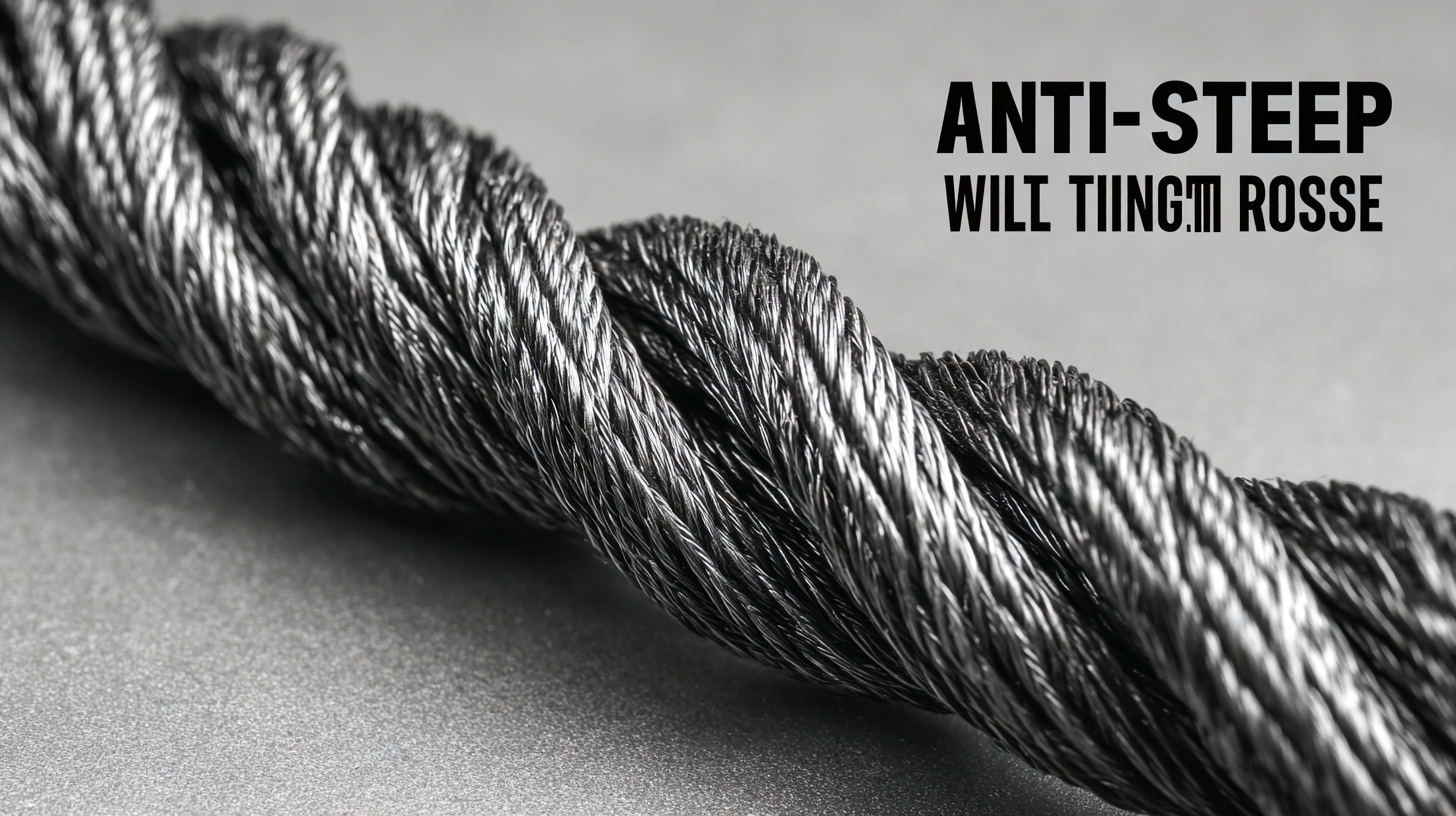Ultimate Guide to Choosing the Best Anti Twisting Steel Rope for Your Projects
In today's fast-paced industrial landscape, selecting the right materials is crucial for the success of any project, especially when it comes to heavy lifting and securing loads. The global demand for Anti Twisting Steel Rope has surged, driven by its exceptional strength, versatility, and durability. According to recent market research, the global steel rope market is anticipated to reach USD 8.9 billion by 2025, with a notable shift towards specialized products like Anti Twisting Steel Rope, which is designed to minimize torsional stress and enhance operational efficiency. As industries such as construction, maritime, and automotive increasingly rely on these advanced rope solutions, understanding the key features, specifications, and trends is essential for making informed purchasing decisions.
This guide aims to equip you with the insights needed to choose the best Anti Twisting Steel Rope for your projects, ensuring quality and performance that meets the demands of modern applications.

Understanding Anti-Twisting Steel Rope: Key Features and Benefits
 When selecting the best anti-twisting steel rope for your projects, understanding its key features and benefits is crucial. Anti-twisting steel ropes are engineered to resist the automatic rotation that can lead to wear and mechanical failure. According to a report by the Technical Institute of Rope Technology, using anti-twisting ropes can reduce maintenance costs by up to 30%, making them an economically sensible choice for heavy lifting and rigging applications. The design incorporates specially arranged strands that minimize torque, enhancing durability and safety on the job site.
When selecting the best anti-twisting steel rope for your projects, understanding its key features and benefits is crucial. Anti-twisting steel ropes are engineered to resist the automatic rotation that can lead to wear and mechanical failure. According to a report by the Technical Institute of Rope Technology, using anti-twisting ropes can reduce maintenance costs by up to 30%, making them an economically sensible choice for heavy lifting and rigging applications. The design incorporates specially arranged strands that minimize torque, enhancing durability and safety on the job site.
In addition to reduced maintenance, these ropes provide increased safety. The same report indicates that utilizing anti-twisting steel ropes can lower the risk of accidents caused by rope entanglement by nearly 25%. This is particularly important in industries such as construction and maritime, where operational safety is paramount. Their unique construction not only offers exceptional resilience under load but also enhances the load-bearing capability, making them ideal for demanding projects. Overall, the engineering behind anti-twisting steel ropes offers significant advantages that directly contribute to improved efficiency and safety in various applications.
Types of Anti-Twisting Steel Rope: Which One Fits Your Needs?
When selecting the ideal anti-twisting steel rope for your projects, understanding the various types available is essential to meet specific operational requirements. Anti-twisting ropes are designed to prevent tangling and twisting during use, a common issue that can lead to operational inefficiencies and increased wear. According to a report by the International Association of Drilling Contractors, implementing anti-twisting features in rope designs can enhance safety and improve performance by upwards of 30% in heavy lifting applications.
The two main types of anti-twisting steel ropes are the compacted strand and the parallel lay rope. Compacted strand ropes are constructed with tight strands, minimizing the space between them, thereby reducing the likelihood of twisting during operation. This type is particularly beneficial in dynamic environments where movement is frequent. In contrast, parallel lay ropes offer a more robust construction, ideal for static loads or situations requiring high strength. The choice between these two options largely hinges on the specific needs of the project, including load capacity and environmental conditions. Statistics from the Steel Wire Rope Association indicate that selecting the proper type can significantly extend the lifespan of the rope, with well-chosen materials lasting up to 50% longer than their inadequately suited counterparts.
Ultimate Guide to Choosing the Best Anti Twisting Steel Rope for Your Projects
This chart displays the breaking strength of different types of anti-twisting steel ropes, which can help you determine the best option for your projects based on load requirements.
Factors to Consider When Choosing Anti-Twisting Steel Rope
When selecting the best anti-twisting steel rope for your projects, several key factors come into play to ensure efficiency and safety. One of the main considerations is the rope's construction. Look for options made from high-quality materials that provide durability and strength. A multi-strand design is preferable, as it minimizes the risk of twisting while enhancing flexibility.
Tips: Always check the manufacturer's specifications regarding load capacity and elongation. Overloading the rope can lead to accidents and reduce its lifespan; thus, calculating the required strength for your specific application is crucial.
Another vital factor is the diameter of the rope. A thicker rope can handle greater loads but may also be heavier and less flexible. In contrast, a thinner rope might offer better maneuverability but could compromise on strength.
Tips: Evaluate the working environment where the rope will be used. If it will endure extreme weather conditions or exposure to chemicals, opt for a rope that has protective coatings or treatments to enhance resistance to wear and tear.

Common Applications of Anti-Twisting Steel Rope in Various Industries
Anti-twisting steel ropes are an essential component across various industries, providing reliable solutions for lifting, towing, and securing. The unique design of these ropes, often constructed with added strands, minimizes the risk of twisting and kinking, which can compromise safety.
According to a report by Freedonia Group, the global demand for steel wire ropes is projected to reach 2.7 million metric tons by 2025, driven by their increasing applications in construction, marine, and aerospace sectors.
In the construction industry, anti-twisting steel ropes are commonly utilized for hoisting and rigging applications. For instance, a study by the Occupational Safety and Health Administration (OSHA) highlights that improper use of lifting equipment contributes to approximately 25% of all construction-related fatalities. The use of anti-twisting ropes can mitigate these risks by ensuring smoother operational efficiency and enhancing safety protocols.
Similarly, in the marine sector, these ropes are crucial for towing and mooring operations, where stability and strength are paramount. The International Marine Contractors Association (IMCA) has noted a growing adoption of advanced steel rope technologies to improve performance and safety standards in offshore operations.
Maintenance Tips for Longevity of Your Anti-Twisting Steel Rope
When investing in an anti-twisting steel rope, proper maintenance is key to ensuring its longevity and performance. Regular inspections can prevent minor issues from escalating into serious problems. Look for signs of wear, such as fraying or rusting, and address these immediately. Keeping the rope clean from dirt, debris, and other contaminants will not only enhance its strength but also extend its lifespan.
Another vital tip is to store your anti-twisting steel rope correctly when not in use. Exposure to harsh environmental factors can lead to deterioration, so ensure it's stored in a cool, dry place away from direct sunlight. Additionally, consider using protective covers or wraps to shield it from abrasion and external damage. Lastly, lubricating the rope periodically can also help reduce friction and prevent corrosion, ensuring smooth functionality for all your projects.
Ultimate Guide to Choosing the Best Anti Twisting Steel Rope for Your Projects - Maintenance Tips for Longevity of Your Anti-Twisting Steel Rope
| Rope Diameter (mm) |
Breaking Strength (kN) |
Weight (kg/m) |
Recommended Applications |
Maintenance Tips |
| 6 |
15 |
0.14 |
Light lifting, fishing |
Store in a cool, dry place and check for wear regularly. |
| 8 |
25 |
0.22 |
Medium lifting, construction sites |
Lubricate regularly and avoid kinks. |
| 10 |
35 |
0.30 |
Heavy lifting, marine use |
Inspect for corrosion and damage after use in harsh conditions. |
| 12 |
45 |
0.40 |
Industrial applications, cranes |
Clean regularly and store properly to extend life. |









 When selecting the best anti-twisting steel rope for your projects, understanding its key features and benefits is crucial. Anti-twisting steel ropes are engineered to resist the automatic rotation that can lead to wear and mechanical failure. According to a report by the Technical Institute of Rope Technology, using anti-twisting ropes can reduce maintenance costs by up to 30%, making them an economically sensible choice for heavy lifting and rigging applications. The design incorporates specially arranged strands that minimize torque, enhancing durability and safety on the job site.
When selecting the best anti-twisting steel rope for your projects, understanding its key features and benefits is crucial. Anti-twisting steel ropes are engineered to resist the automatic rotation that can lead to wear and mechanical failure. According to a report by the Technical Institute of Rope Technology, using anti-twisting ropes can reduce maintenance costs by up to 30%, making them an economically sensible choice for heavy lifting and rigging applications. The design incorporates specially arranged strands that minimize torque, enhancing durability and safety on the job site.